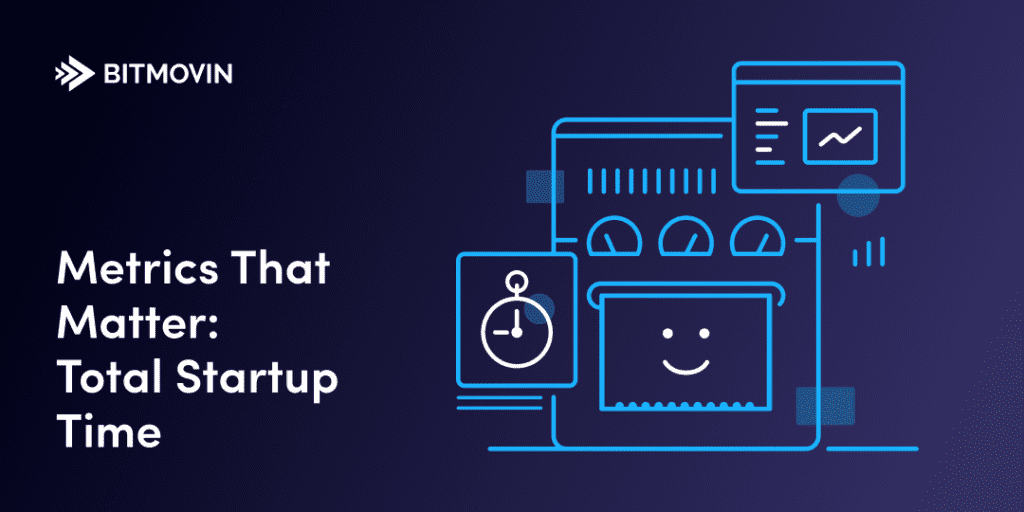When it comes to back-end video app management, there are five primary metrics that can make or break your business at any stage once your service has launched:
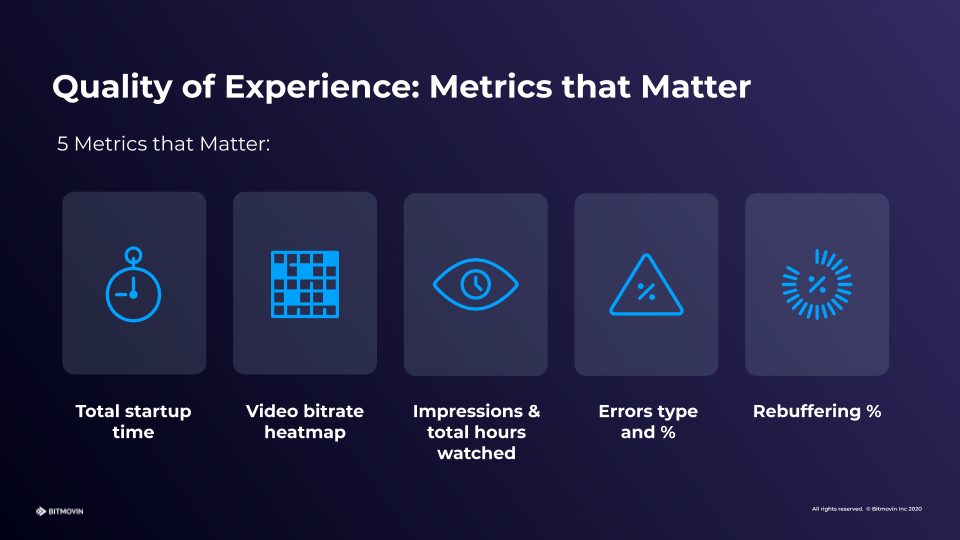
Today we’re covering the only metric that everyone in the video streaming industry will agree is A) the most important metric you need to monitor at all times and B) guaranteed to lose your business if you ignore it: Total Startup Time. And although it’s rare to recommend anyone have “an obsession” of any sort, there are a few compelling reasons that having an obsession with startup time is healthy (at least for business).
Healthy obsessions for startup time in audio streaming
Much like its history in creation, audio streams came before video – as such audio streaming experts, much like Spotify founder, Daniel Ek, found himself (healthily) obsessed with startup time.
Before becoming the audio streaming giant that Spotify is today, Ek found his company competing against the traditional media market of the time, offline experiences, and recognized that he had to match that experience of listening to music offline. An integral part of that experience was the ability to double-click on a song (or press play) and the song would playback immediately without any perceived delay. Ek identified that the only way that music consumers would switch to an online stream would be if that experience would match offline playback.
Daniel found that there was one prominent key that helped Spotify achieve his goal of matching offline experiences: You guessed it, he obsessed about obtaining a startup time with 200 milliseconds startup delay.
“We never got it down to 200 milliseconds consistently. We got it down to about half a second but when you play then with things such as the throbber … and you actually, cognitively make it move even before there’s sound, the human brain perceives it to be instant even though technically, it wasn’t. There’s a lot of things that you could do, and I got really into the details thereof just creating an amazing experience that solved the end goal.”
Considering that much of this story played out in 2006, even though audio was a bit of spearhead in terms of streaming, it is amazing how this concept is still relevant for video in 2020. Especially looking at startup times today. According to Bitmovin’s Analytics, median video startup time value across all customers is 1.537 seconds, miles apart from Spotify’s goal for audio.
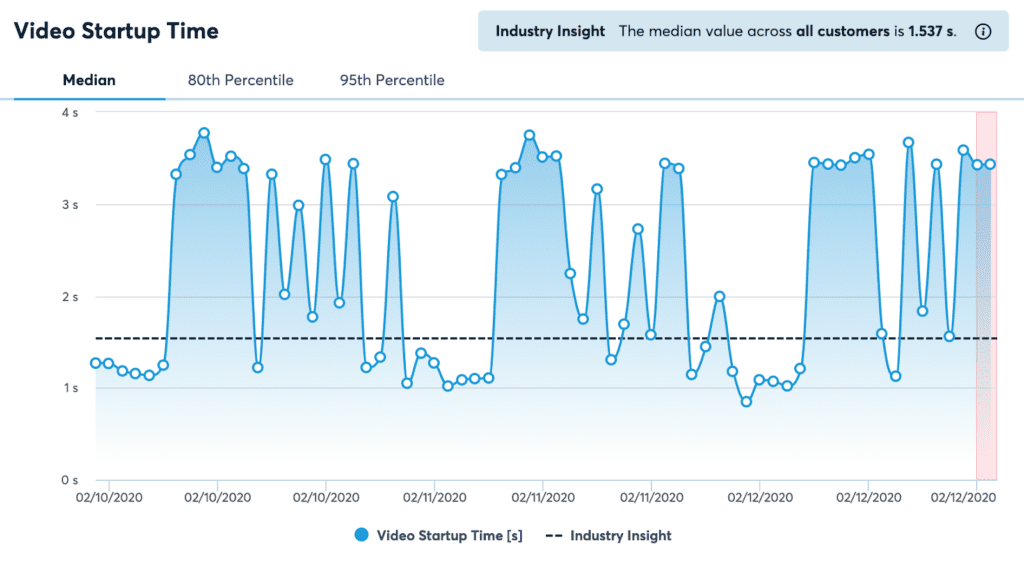
But why should we actually obsess about startup time?
According to research from our 2019 Video Developer Report, as well as conversation with prospective customers, one of the biggest assumptions in the video streaming industry is that longer startup times lead to abandonment before the content starts playing. According to This was supported in Akamai’s 2012 Whitepaper, Maximizing Audience Engagement, where they found that “for every additional second of startup delay, an additional 5.8% of your viewership leaves”
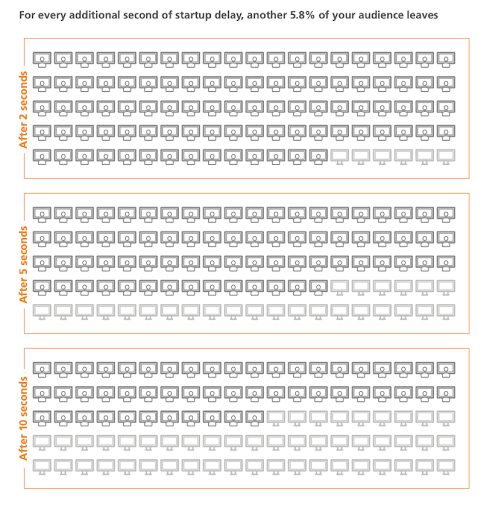
Many indicators suggest that viewers have become more impatient in the 8 years since the Whitepaper, even though network conditions have improved tremendously, hence we’re still struggling with the same problem. This was displayed prominently at Demuxed 2019 by Ben Dodson from Snap Inc. He showed that if a “snap” took 2 seconds or more to load, the entire user base would have abandoned their individual sessions (see graph below).
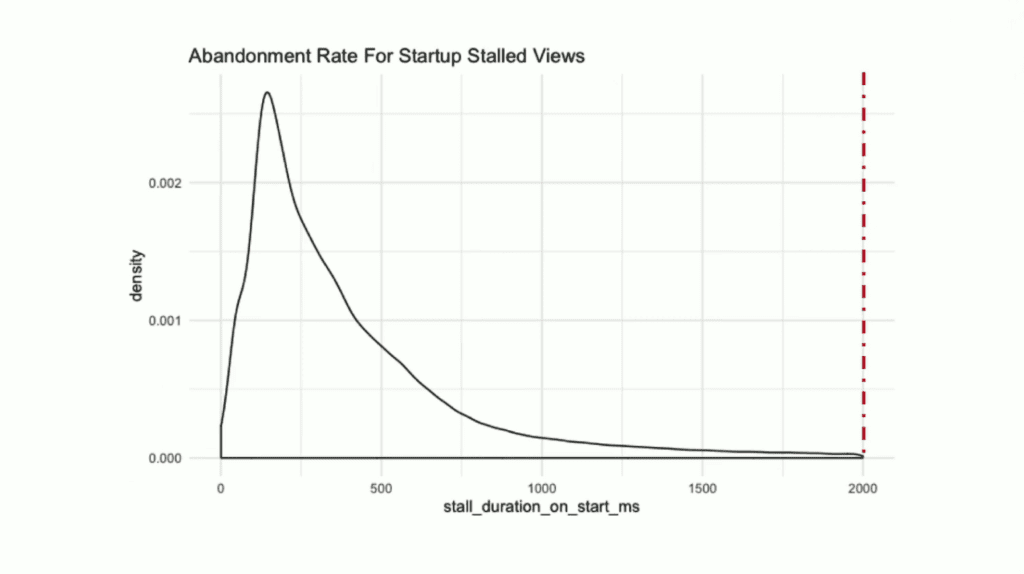
It’s important to note, however, that Dodson mentioned (and correctly) that the specific context of Snapchat has to be taken into consideration:
- Very specific target audience (millennials and younger)
- Length of the video (short)
- Consumption pattern s – due to the length and duration of content (10-60 secs)
Although Snap’s data is very context-dependent, it still acts as compelling evidence that startup time is more important than ever for viewers, especially for younger audiences.
What affects startup time?
Startup time may be the metric that makes or breaks your business, but it ultimately comes down to a variety of factors that would result in slower startup times. This is especially relevant in video streaming as the workflow is often very complex as a result of elements coming from a variety of different systems and vendors (internal ones included). The industry-accepted metric for startup performance is video startup time or join time. The Bitmovin Analytics dashboard defines video startup time as the total delay between a viewer pushing “play” and the first frame.
Although startup time is the primary measurement that effects viewer bounce rates, it doesn’t tell the full story of a viewer’s experience. Indicators such as page and player load times are additional integral “startup” metrics that affect a user’s perception and willingness to stay on-page.
Other factors that frequently affect your video’s startup time are Content Delivery Network (CDN) implementations, the bandwidth conditions, the bitrate ladder, bitrates, segment size, adaptation logic, and ad insertions. Despite how simple analyzing startup sounds, the reality is, it’s a complex measurement system that needs careful consideration and attention…one might even say that you need a healthy obsession to manage it appropriately.
Monetization Models – startup time friend or foe?
Advertising-based video on demand (AVOD)
The number one reason any organization might get into VOD services is to create content, and therefore monetize on that content. When it comes to startup time, the monetization faction that may result in the negative times would be Ad Insertions – streaming services that use ad insertions, better known as advertising-based video on demand (AVOD) services (ex: Youtube, Hulu, etc). AVOD services bring in guaranteed revenue, but their back-end implementations often cause major issues: Your video content might be well-tuned, encoded, and set up to perform seamlessly, but a media server might deliver an ad with additional delays that’ll instantly impact the first experience of every viewer by serving content (ads) with high buffer times. In a demo session, our analytics dashboard displayed these ad-based delays with alarming frequency – can you find the worst offender?
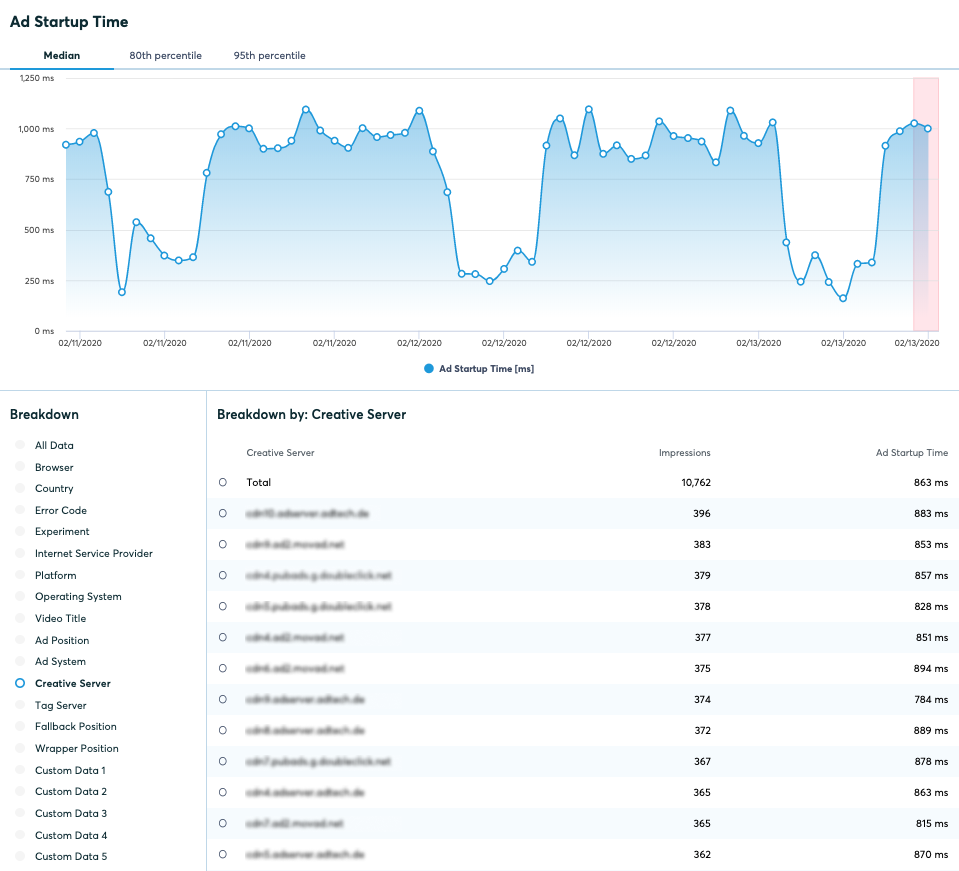
Subscription-based video on demand (SVOD)
On the other side of the monetization spectrum for VOD services are subscription-based models (Ex: Netflix, Amazon, Disney+, etc). Given that ad servers aren’t involved in these workflows, startup time is not directly affected by subscription models. However, SVOD services are often more at risk of content piracy from individuals who want to avoid paying at all costs. This is where Digital Rights Management (DRM) services come into play. DRM is almost essential to protect costly content licenses against piracy. As with Ad Insertions, DRM license servers will add seconds to startup time in the form of loading times – potentially influencing viewer experiences negatively. This can especially become an issue during live streams at a certain scale where load time is dramatically affected. The example below illustrates one of these delays – Y-axis: load time | X-axis: video timestamp
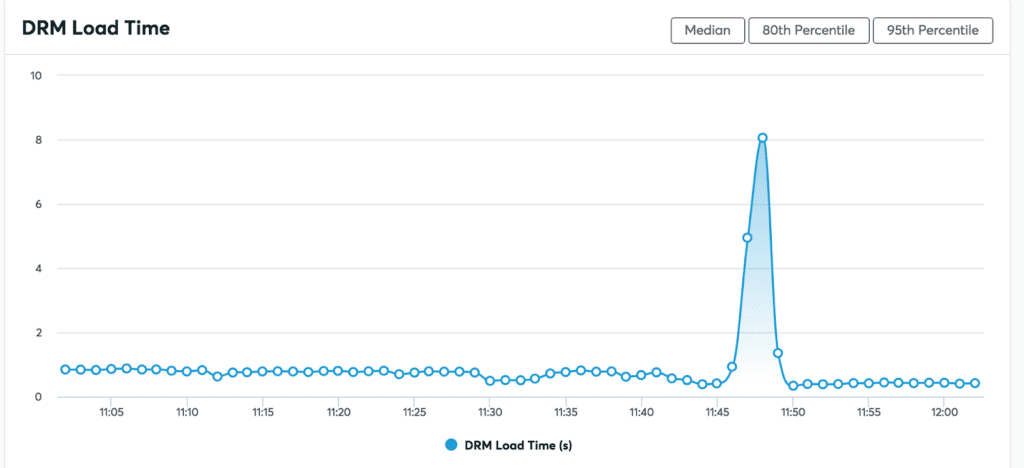
Final thoughts
Knowing what you know now, are you convinced and obsessed with startup time as much as we are yet? Given the severity of viewer bounce rate for every second of delay (5.8%/s) and how many factors go into properly managing your app’s startup time, I certainly hope so! So if you want to be as obsessive about startup time as Spotify, it is not only important to look at video startup time but to consider the overall startup experience and it’s contributing parts.
Bitmovin tracks all of the individual metrics mentioned in this post, as well as the combined metric of all parts mentioned before, otherwise known as Total Startup Time.
Did you like this post? Then check out some of our other great content:
Everything you need to know about DRM [Blog]
Bitmovin Analytics API [Datasheet]
Do you want to talk to a Bitmovin Analytics expert to learn more about any of our five key video metrics? Send us an email @ [email protected] and we’ll startup a chat!

